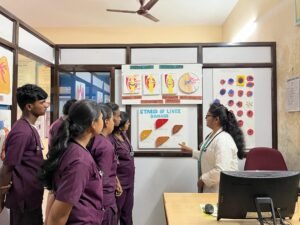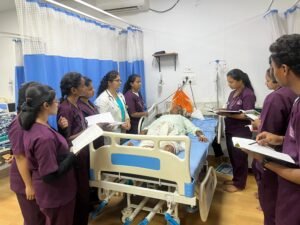Department of Rog Nidan Avum Vikriti Vigyan
Roganidana, in Ayurveda, refers to the branch of pathology that deals with the study of diseases (Roga). It encompasses the understanding of disease causes, mechanisms, symptoms, and their classifications according to Ayurvedic principles. Vignana refers to Vishesha Gnana i.e. specialised knowledge.
Roganidana aims to identify the root cause (Nidana) of diseases, which could be imbalance in doshas (biological energies), improper diet and lifestyle, environmental factors, or genetic predispositions. This branch forms a crucial part of Ayurvedic diagnostics and treatment strategies, focusing on holistic approaches to restore balance and promote health.
Ayurveda views diseases not only as physical imbalances but also as disturbances in the body’s doshic (energetic) equilibrium and metabolic processes. Roganidana practitioners employ various diagnostic techniques including pulse examination (Nadi Pariksha), observation of physical signs (Darshan), and detailed patient history (Prashna). These methods help them identify the root cause of ailments and tailor treatment strategies accordingly.
Additionally, Roganidana involves understanding disease patterns in relation to the three doshas (Vata, Pitta, Kapha) and their impact on bodily tissues (Dhatus) and waste products (Malas).
It is being mentioned that fundamentals of Ayurveda are explained under Trisutras i.e. Hetu (causes), linga (symptoms) and aushadha (medicines). That means two-third of the fundamentals of Ayurveda coming under the purview of Roganidana..







Vision
“To be the pacesetter in nurturing highly compentent professionals by innovations which will contribute to the global landscape of roga nidana education while providing high quality diagnostic services”
Mission
To render high quality education that will prepare students for the challenges in field of Roga Nidana.
- To foster critical thinking in diagnosing the disease through Ayurveda in undergraduates .
- To provide the premier quality diagnostic tools for optimal patient outcome.
